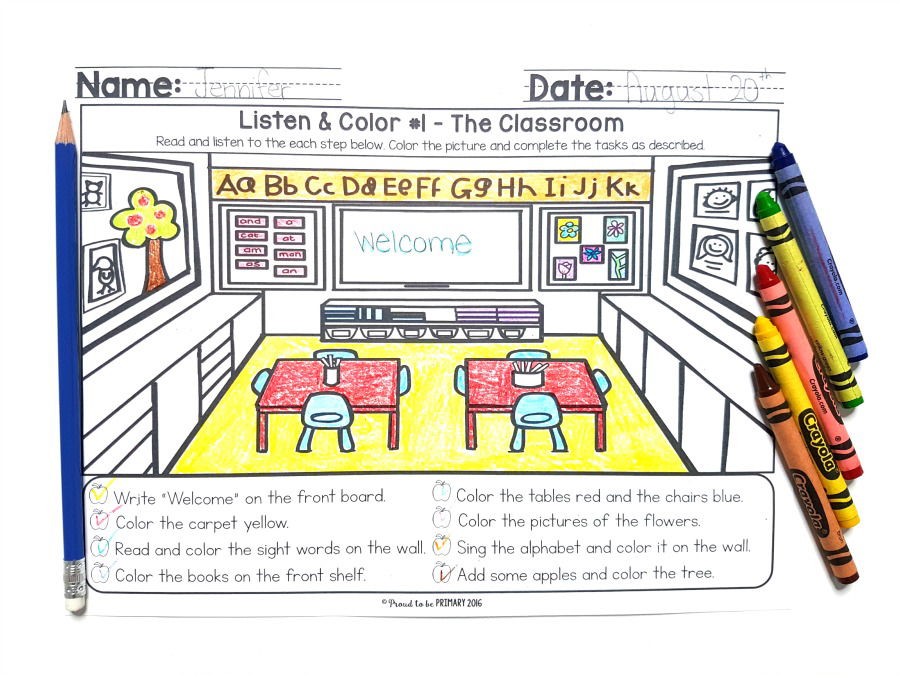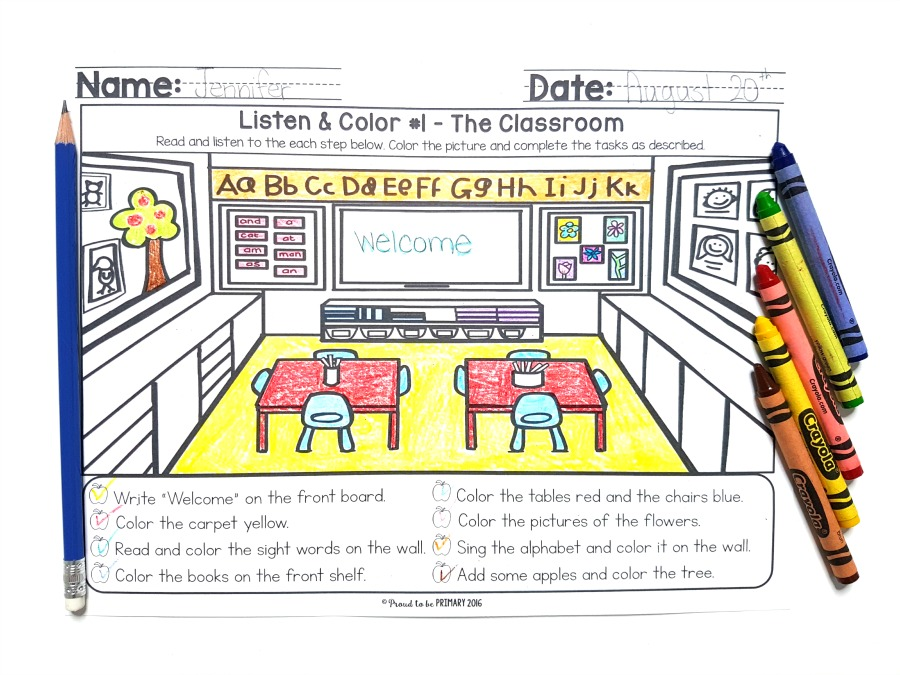7 strategies for teaching listening skills in the classroom

7 LISTENING ACTIVITIES TO GET YOUR STUDENTS ATTENTIVE & READY TO LEARN
As teachers, we always hope that our students are listening carefully to our lessons and assignment instructions. Unfortunately, we find that sometimes they aren’t paying close attention to what we’re saying and this can affect their learning. This becomes a problem when they miss key information during instruction. It’s a good idea to take some time to explicitly teach listening skills so that students retain more of the information we are giving them.
How do we do that? Well, in this post I’m going to share with you 7 strategies for teaching listening skills in the classroom.
These 7 actionable ways to teach listening skills in the classroom will be just the ideas that you need. Your students will gain knowledge of what it looks like and feels like to be an active listener, engaged and responsive to a speaker, and able to complete a task by following directions. By taking the time to practice good listening skills with your students, I’m sure you will find your job just a little bit easier.
7 LISTENING ACTIVITIES THAT PROMOTE ATTENTIVENESS IN THE CLASSROOM
1. MODEL GOOD LISTENING STRATEGIES
In front of the classroom, play a short game of Simon Says with one child volunteering to be “Simon” and you are the game player. Model good listening strategies such as looking the speaker in the eye, repeating the directions to yourself (aloud so they can hear you), not starting until you’ve heard all the instructions (say aloud, “Ok, he’s finished giving me the instructions so now I may begin”), and speak aloud what you’re going to do as if you were picturing it in your mind before doing it. After “Simon” gives you a few short instructions, ask the class to tell you what they witnessed you did well. Write their answers in a thinking map on the board.
Classroom meetings are another great opportunity to model and practice listening skills. The class sits together in the circle and takes turns sharing their thoughts and feelings on the topic being discussed. Children are encouraged to look at the speaker and listen to what they say.

2. PARTNER CONVERSATIONS
Pair children up and give them a general discussion topic. Each child takes turns being the speaker or the listener. When the speaker is finished speaking, have the listener repeat one of the speaker’s main points, and offer them a compliment. Having “Think, Pair, Shares” during lessons and discussions is a great way to practice receiving and sharing what is heard.

3. TEACH “WHOLE BODY LISTENING”
A much-used concept in the early primary grades is “whole body listening.” In whole body listening, a student practices keeping particular key parts of their body focused on the speaker. Their eyes are watching, ears are listening, brain is focused on the speaker’s information, mouth is closed, shoulders are squared toward the speaker, heart is caring about the message, hands are folded or in lap, feet are still on the floor.
In other words, they are actively “listening” with their entire bodies. Teach your whole class this concept and practice it as a group, before expecting them to put it into practice. I use this book, Whole Body Listening Larry at School by Elizabeth Sautter, to teach this concept. More go-to books for reinforcing listening skills are Listen, Buddy, Listen and Learn, and My Mouth is a Volcano.
You can grab a fantastic FREE whole body listening pack from Erica Bohrer to help teach your students this important skill.
4. DAILY LISTENING ACTIVITIES
One way to see a marked improvement in your students’ listening skills is to give them short, daily skills practice. Any daily practice should be fun, and practical. In this case, the skills should include encouraging kids to focus on oral instructions, visualizing the tasks given, and completing them accurately. Give them short instructions verbally for completing a task, or two or three tasks in succession (depending on their age/cognitive development), and have them practice listening and completing the tasks without repeating the instructions.
One idea for this activity is to have them pull out a blank sheet of paper and give them instructions. For example, “Draw a large brown oval in the center of your paper. Add an orange letter V in the center. Use a black crayon to draw two large circles, side by side, above the V” (and they end up with a basic sketch of an owl on their paper that they can finish drawing details and color on their own). Want some pre-made activities for daily practice such as this? Try my HUGE assortment of Listening Mats, perfect for any time of the year.
5. THE STORYTELLING GAME
In this game, you start a story with a beginning phrase, and then each child in the classroom adds one word to the story in turn. Students must be active participants and follow the story closely so that when their time comes to add a word, the story will make sense. Another way to practice this is by playing a traditional game of Telephone where a message is passed around the room to see if it stays the same.
6. STORYTELLING PODS
Sort children into groups of three. In these “pods,” they are to play the storytelling game, only in successive story events rather than one-word. For example, the first student starts with an event such as “The rabbit found a carrot in the garden.” Then the second student adds an event that happens afterward in the story, such as “The carrot was too big to carry.” The third student adds, “So the rabbit put it in a wagon to pull it to his burrow.” After time is given for the pods to come up with their three-event stories, instruct the students to move to a new pod. In those groups, they must retell their stories with perfect accuracy to their new pod members.
7. 20 QUESTIONS
In this classic game, lots of listening skills are practiced without even explicitly calling it a “lesson in listening skills”. Play this game any time you feel you need subject review, and practicing listening skills at the same time! For instance, tell the class you are an item that starts with a certain letter, a fictional character, or a Science object you’ve recently learned about. Have them ask you 20 yes/no questions to try to figure out what you are.


